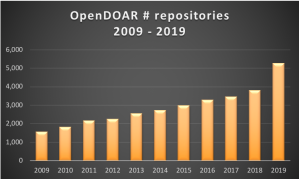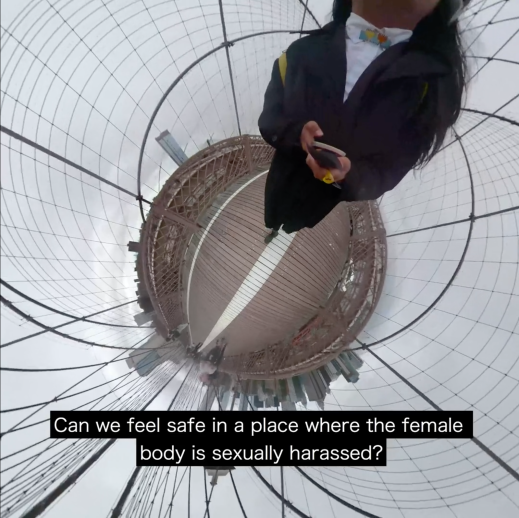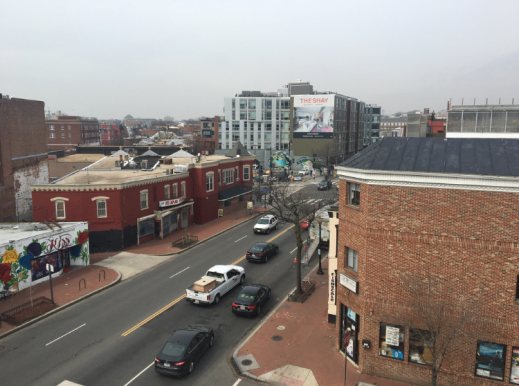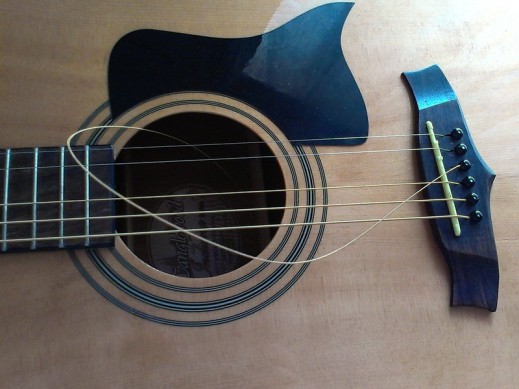>> English below

Image by Nicki Varkevisser
Bijdrage aan de Spui25-bijeenkomst De roman en het geschreven woord in tijden van technologisering, ter gelegenheid van de verschijning van Maxim Februari’s laatste boek De onbetrouwbare verteller. (Meer van dit in mijn nieuwe boek Frictie: Ethiek in tijden van dataïsme, dat in mei 2020 verschijnt bij De Bezige Bij.)
‘See, in spite of all this omnipresent law enforcement, because we want to hear and taste and smell and feel, we can’t go very long without trying to talk about some art.’ Fred Moten
Ik wil beginnen met een vraag, om de stemming er een beetje in te krijgen. Antwoord er gewoon in gedachte op, het is misschien niet iets om meteen te delen. Wie is er zeker van dat zijn beroep in de komende jaren blijft bestaan en niet wordt weg-geautomatiseerd? Wie ziet zichzelf als bestand tegen robotisering en algoritmisering? Schrijvers? Docenten? Sorry, ik moet u teleurstellen. Ook rechters, artsen en chauffeurs zullen het zwaar hebben, en muzikanten en kunstenaars. Allen zullen uit de markt geconcurreerd worden door robots. Hebben we eindelijk tijd over om te lezen! Als we dat dan nog kunnen.
Dit is het ene verhaal dat steeds te horen is: de automatisering komt eraan en neemt alles over, of dat nu the best of times of the worst of times oplevert. Parallel daaraan klinkt echter ook een ander verhaal steeds luider. Automatisering, heet het dan, is grotendeels bedrog. Het gevaar ervan is zwaar overdreven, want robots kunnen welbeschouwd niet eens een vork vasthouden, algoritmes zijn dommekrachten die sturing nodig hebben en kunstmatige intelligentie kan misschien goed schaken, maar een simpel gesprekje voeren, ho maar. Kortom, hoe vergevorderd de automatisering al is wordt overschat en de meeste beweringen over wat ze al kan zijn ronduit nep. In plaats van AI – artificial intelligence – is er eerder sprake van Fake I of fauxtomation (naar Astra Taylor).
Een inmiddels bekend voorbeeld is de kwestie van contentmoderatie: het schoonhouden van het internet door geweld, porno en vrouwentepels daarvan te verwijderen. Uit talloze artikelen, getuigenissen en een documentaire als The Cleaners, blijkt dat dat niet wordt gedaan door slimme algoritmes, zoals bedrijven als Facebook en Google graag doen geloven, maar door (veelal jonge) mensen. In ware contentmoderatie-fabrieken checken zij meldingen van berichten op Facebook, foto’s op Instagram of filmpjes op YouTube die als ongepast zijn gerapporteerd, zoals dat heet. In een lange stroom trekken de berichten aan het oog van de moderator voorbij, die binnen een vloek en zucht moet beslissen of hier de regels worden overtreden. Naast de gewone scheldpartijen en bedreigingen behoren politieke satire, kinderporno, onthoofdingen door terroristen en oorlogsmisdaden opgenomen door burgerjournalisten min of meer tot de orde van de dag. Duizenden berichten per dag verwerken zij, blij zijn dat ze werk hebben, click delete, click accept, click delete delete delete. Niks automatisering.
Hoewel, deze twee verhalen – van automatisering en de ontmaskering ervan als mensenwerk – liggen misschien toch minder ver van elkaar af dan het lijkt. Automatisering vindt wel degelijk plaats – niet omdat robots de wereld overnemen, maar omdat de mens onder invloed van technologie automatiseert. De verpleegster die moet werken op het ritme van de minuut, zal die zich niet een soort robot voelen? De Uber-chauffeur wiens bestaan gedicteerd wordt door een app, is dat niet de werkelijke ‘zelfrijdende auto’?
Ik hoorde onlangs iemand vertellen hoe dit in de sociologie de diagnose ‘beleidsvervreemding’ krijgt. Bij beleidsvervreemding ontkoppelt de psyche van de professional zich van wat hij aan het doen is en – belangrijk – ook van het waarom. Hij voert een taak uit, als een soort algoritme.
Mensen die op de automatische piloot moeten werken, raken vervreemd, dat wist Marx al. Maar vervreemding heeft ook een positieve kant. Zo schrijft Sara Ahmed over vervreemding dat ze leergierig is: ‘je leert nu eenmaal meer over je wensen als die niet zijn wat je wenst. We kunnen vervreemding begrijpen als verwondering; we verwonderen ons over dingen; we verbazen ons over hun samenstelling.’ (Living a Feminist Life)
Vervreemding is in deze zin de eerste stap naar verandering. Ze doet je eerst halt houden, en zet je vervolgens in beweging. Een nieuwe beweging, de andere kant op. Deze vervreemding, en nu kom ik eindelijk bij de literatuur, is de-automatisering te noemen. Dat heb ik natuurlijk niet zelf bedacht. De-automatiseren, vervreemden, is hoe Viktor Sjklovski, de Russische formalist, de werking van literatuur omschrijft. Zo’n honderd jaar geleden, in de jaren tien van de twintigste eeuw, observeerde hij hoe we door automatisering niet meer echt waarnemen, en bij uitbreiding niet meer echt denken, liefhebben, leven. En om uit die waas te breken, moet de kunst dus waarneming, en ja, ook het leven, de-automatiseren.
Uiteraard had Sjklovski het niet over de automatisering door algoritmes en robots, maar over die van het moderne leven. Hij schrijft bijvoorbeeld: ‘Zo gaat het leven verloren, verdwijnend in het niets. De automatisering slokt de dingen op, je kleren, je meubels, je vrouw en je angst voor oorlog.’
Tegenwoordig wordt automatisering vooral ingezet om de angst voor oorlog juist aan te wakkeren, vrees ik. Maar wat zij nu ook nog steeds doet is ons meesleuren in een stroom die geen tijd laat om daadwerkelijk waar te nemen, te denken, liefhebben, leven. Een net van zogeheten frictionless design doet je van app naar slimme meter naar beveiligingscamera bewegen, zodat je geen moment aan je eigen automatisering ontsnapt. Steeds alomtegenwoordiger, is deze technologie tegelijk steeds onzichtbaarder. Ook daarom beneemt automatisering je de waarneming: het is de bedoeling dat je haar niet ziet, er niet te veel aandacht aan besteedt, dat de techniek naar de achtergrond verdwijnt en het vanzelfsprekende decor gaat vormen van het hele leven.
Over het hele leven gesproken. Met een verwijzing naar Tolstoj schrijft Sjklovski: ‘Als het hele ingewikkelde leven van velen zich onbewust afspeelt, dan is het alsof dit leven er nooit geweest is.’ Dan is niet alleen het werk, maar ook de rest van de mens weg-geautomatiseerd.
Wat een drama! Maar gelukkig is daar het woord. De automatisering de-automatiseren, zoals de literatuur doet, werkt als vervreemding die verwondert – met het woord van Sjklovski: ostranenie. Daarmee is ze een soort ethische hefboom, die ons uit de woekerende beleidsvervreemding wakker schudt. Ze is als frictie in een frictieloze wereld, die je halt doet houden, en dan weer in beweging brengt, mogelijkerwijs de andere kant op.
Dat kan door verhalen te ontmaskeren, zoals de hoogmoedige automatiseringsfantasieën over robots en singularity, waarachter een vuile werkelijkheid schuilgaat. Maar op zich kan de journalistiek dat ook. Specifiek literaire taal doet echter nog iets anders. Ik wil twee voorbeelden van Sjklovski noemen. Zo hecht hij veel waarde aan de stijlfiguur van het parallellisme. Het parallellisme laat zien ‘dat iets niet met iets anders samenvalt terwijl het er toch gelijk aan is.’ Met andere woorden, in het parallellisme kan iets tegelijkertijd twee verschillende dingen zijn: zichzelf en niet-zichzelf, hetzelfde en verschillend, aanwezig en afwezig. The best of times en the worst of times. Het doet dus precies dat wat in de technologie – de grote gelijkmaker – niet mag of kan.
Het tweede voorbeeld heeft te maken met de hang van de literatuur naar het particuliere en het specifieke. Technologie en automatisering drijven op kwantificatie, reductionisme en categorisering. Vooral die laatste is de bureaucratische natte droom van de Totale Dataficatie. Maar categorieën zijn per definitie een benadering, een vak voor veel verschillend spul. De categorieën van de technologie kunnen nog zo verfijnd zijn, de specificiteit van een woord of beeld van de schrijver is van een totaal andere orde. En daarom, aldus Sjklovski, gaat het erom de categorieën omver te werpen, en de stoel weer los te rukken uit het begrip meubel.

De-automating Automation
Talk held at the Spui25 event The Novel and the Written Word in Technological Times, celebrating the publication of Maxim Februari’s latest book De onbetrouwbare verteller (The Unreliable Narrator). More on this topic in my upcoming book on Friction: Ethics in Times of Dataism (in Dutch), May 2020, De Bezige Bij.
‘See, in spite of all this omnipresent law enforcement, because we want to hear and taste and smell and feel, we can’t go very long without trying to talk about some art.’ Fred Moten
I’d like to start with a question, just to get in the mood. You may answer in silence – it might not be something to share right away. Here goes: Who is sure that their profession will continue to exist in the years to come and will not succumb to automation? Who believes themselves to be resistant to robotization and algorithmization? Writers? Teachers? Sorry, I have to disappoint you. Judges, doctors, and drivers will also have a hard time, as will musicians and artists. All of them will be outrivaled by robots. Well, then finally we’ll have time to read (if we still can).
This is the one story that can be heard all the time: automation is coming and will take over everything, whether it’s for the best of times or for the worst of times. At the same time, however, another story is resounding louder and louder. Automation, this story says, is largely a deception. Its danger is greatly exaggerated: robots can’t even handle a fork, algorithms are mindless drudges that crave control, and while artificial intelligence might be excellent at playing chess, having a simple conversation is already one step too far. In short, the level of automation is overestimated and most claims about what it can do are simply false. Instead of AI – artificial intelligence – we should rather talk of Fake I or fauxtomation (after Astra Taylor).
A well-known example is the question of content moderation: keeping the internet clean by removing violence, porn and women’s nipples. Numerous articles, testimonies, and a documentary such as The Cleaners, show that this work is not done by smart algorithms, as companies like Facebook and Google would have us believe, but by (mostly young) people. Operating from veritable content moderation factories they check messages on Facebook, photos on Instagram or videos on YouTube that have been reported as ‘inappropriate’. In an endless stream, the messages pass by on the moderator’s screen, who has to decide whether the rules are violated in the blink of an eye. Political satire, child pornography, decapitations by terrorists and war crimes recorded by civilian journalists are more or less commonplace, next to the usual insults and threats. Processing thousands of messages a day, happy to even have a job, they click delete, click accept, click delete delete delete. No automation here.
These two stories – of automation and of its exposé as work done by humans – may not be as far apart as they seem. Automation does take place – not because robots take over the world, but because humans themselves automate under the influence of technology. The nurse who has to work to the beat of the minute, won’t they feel like a robot? The Uber driver whose existence is dictated by an app, aren’t they the real ‘self-driving car’?
I recently heard someone tell how in sociology this is diagnosed as ‘policy alienation’. Policy alienation disconnects the professional’s psyche from what they are doing and – importantly – from the why. They perform a task, as a kind of algorithm.
People who have to work on autopilot become alienated, as Marx already knew. But alienation also has a positive side. Sara Ahmed describes alienation as studious: ‘you learn more about wishes when they are not what you wish for. We can think of alienation then as wonder: we wonder about things; we marvel at their assembly.’ (Living a Feminist Life)
In this sense, alienation is the first step towards change. At first, it makes you stop – and then it gets you moving. A new movement, heading in a different direction. This alienation, and now I’m finally coming to literature, is also called de-automation. I didn’t think of that myself. De-automation and alienation are how Viktor Shklovsky, the Russian formalist, describes the effect of literature (in English: de-familiarization). About a hundred years ago, in the 1910s, he observed how because of automation we no longer really look, and by extension, no longer really think, love, and live. In order to break out of this mist, art has to de-familiarize or de-automate perception, and yes, also life.
Of course, Shklovsky was not talking about automation by algorithms and robots, but about modern life. He writes, for instance, in ‘Art as Technique’: ‘Life is reckoned as nothing. Automation devours work, clothes, furniture, one’s wife, and the fear of war.’
Nowadays, automation is mainly used to stir up the fear of war, I’m afraid. But it still devours us, leaving no time to actually look, think, love, live. A network of so-called frictionless design lets us move from one app to the next smart appliance to another security camera, allowing no escape from your own automation. Increasingly omnipresent, this technology is at the same time increasingly invisible. That’s another reason why automation robs you of perception: the intention is precisely not to be seen, to not attract too much attention, to disappear into the background and become the natural backdrop for your whole life.
Talking about whole lives. With a reference to Tolstoy, Shklovsky writes: ‘If the whole complex lives of many take place unconsciously, it will be as if their lives had never been’. Then, not just work but all the rest of human life will be automated away, too.
So dramatic! Fortunately, art comes to the rescue. De-automation, as literature does, can work as alienation-as-wonder -as-defamiliarization – with the word Shklovsky uses: ostranenie. It turns de-automation into a kind of ethical lever that might awaken us from the proliferation of policy alienation. It provides friction in a frictionless world, making you stop, and then move again, possibly in another direction.
How would this actually work? It can be done by exposing certain stories, such as the haughty automation fantasies about robots and singularity that hide a dirty reality. But journalism could do this too. Literary language, specifically, does something else. I would like to mention two of Shklovsky’s examples. First, he attaches great importance to the technique of parallelism. A parallelism shows ‘that something does not coincide with something else, even though they are of the same kind’. In other words, in parallelism, something can be two different things at the same time: itself and not itself, the same and different, present and absent. The best of times and the worst of times. It does exactly what technology – the great equalizer – cannot or must not do.
The second example has to do with the tendency of literature to be particular and specific. Technology and automation rely on quantification, reductionism, and categorization. The latter, in particular, is like a bureaucratic wet dream of Total Datafication. But categories are by definition an approximation, a container that can hold a lot of different stuff. However refined the categories may be, the specificity of a writer’s words or images is something completely different. And that’s why, according to Shklovsky, we have but one task: to overthrow all categories and to tear the chair out of the concept of furniture again.
Translated with help from www.DeepL.com/Translator (free version)

 9 was another great year for open access! Of the 57 macro-level global OA indicators included in The Dramatic Growth of Open Access, 50 (88%) have growth rates that are higher than the long-term trend of background growth of scholarly journals an d articles of 3 – 3.5% (Price, 1963; Mabe & Amin, 2001). More than half had growth rates of 10% or more, approximately triple the background growth rate, and 13 (nearly a quarter) had growth rates of over 20%.
9 was another great year for open access! Of the 57 macro-level global OA indicators included in The Dramatic Growth of Open Access, 50 (88%) have growth rates that are higher than the long-term trend of background growth of scholarly journals an d articles of 3 – 3.5% (Price, 1963; Mabe & Amin, 2001). More than half had growth rates of 10% or more, approximately triple the background growth rate, and 13 (nearly a quarter) had growth rates of over 20%. Newer services have an advantage when growth rates are measured by percentage, and this is reflected in the over 20% 2019 growth category. The number of books in the Directory of Open Access Books tops the growth chart by nearly doubling (98% growth); bioRxiv follows with 74% growth. A few services showed remarkable growth on top of already substantial numbers. As usual, Internet Archive stands out with a 68% increase in audio recordings, a 58% increase inco
Newer services have an advantage when growth rates are measured by percentage, and this is reflected in the over 20% 2019 growth category. The number of books in the Directory of Open Access Books tops the growth chart by nearly doubling (98% growth); bioRxiv follows with 74% growth. A few services showed remarkable growth on top of already substantial numbers. As usual, Internet Archive stands out with a 68% increase in audio recordings, a 58% increase inco llections, and a 48% increase in software. The number of articles searchable through DOAJ grew by over 900,000 in 2019 (25% growth). OpenDOAR is taking off in Asia, the Americas, Africa, and overall, with more than 20% growth in each of these categories, and SCOAP3 also grew by more than 20%.
llections, and a 48% increase in software. The number of articles searchable through DOAJ grew by over 900,000 in 2019 (25% growth). OpenDOAR is taking off in Asia, the Americas, Africa, and overall, with more than 20% growth in each of these categories, and SCOAP3 also grew by more than 20%.




























 REWIND! . . .If you liked this post, you may also dig:
REWIND! . . .If you liked this post, you may also dig:
 REWIND! . . .If you liked this post, you may also dig:
REWIND! . . .If you liked this post, you may also dig: